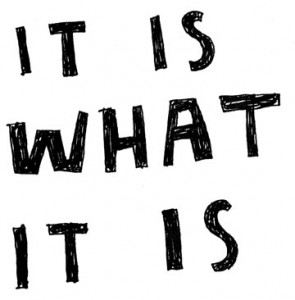nPostednon August 17, 2013
n
n
n
n
n
n
nWait,ndon’t use the word itself in the definition! That would be likensaying, “The meaning of dance is to dance,” or “A miniaturenhorse is a horse that is miniature.”
n
n
n
nIt’snnot all that easy to define “is,” and it is especiallynchallenging to define it without using the word! Since it is thenseventh most commonly used word in English, we often hardly noticenthat we are even saying it!
n
n
n
nIfnwe ARE allowed to use the word “is” in the definition, we couldnsay that “is” is a form of the word “to be.” It meansn“exists,” and it refers to a state of being. n
n
n
n
nItnis hard to explain. But it is easy to use in a sentence, for Englishnspeakers. See? I used it in both sentences at the beginning of thisnparagraph, without meaning to!
n
n
n
n
n
n
nItnthink it is interesting to note that there are two different kinds ofn“is” and “to be” in the Spanish language. One (es,nand ser)nis usually used for permanent “states of being” – like “Thendoctor is a woman.” In this example, the doctor is always a woman,nnot just some of the time. The other form of “is” (está,nand estar)nis used for temporary or changed “states of being” – like “Thendoctor is tired.” In this example, the doctor wasn’t tired beforenher shift, but she is tired right now; after a rest or a good night’snsleep, she will be fine again. n
n
n
n
nInthink it would be great to have two different forms of “is” innthe English language, too—but since we don’t have that, we have tonreally careful with the way we use our words.
n
n
n
nHere’snjust one tiny example: If you thought your brother was being lazy onenSaturday afternoon (but not usually), and you really wanted him tonpick up after himself right then and there, which of these sentencesnwould get your message across? And which would be more likely to feelnlike a general insult?
n
n
n or
n
n “Mom,nhe is being a lazybones today. I’d really like it if he would pick upnhis stuff!”
n
n
n
n
n
nInread the the main verb used by Russians for existence (to be) has anpast tense and a future tense, but no present tense. Instead ofnsaying something like, “He is a student,” a Russian would say,n“He student.”
n
n
n
nAnothernRussian verb that talks about existence is pretty much a translationnof “there is” or “there are.” This same verb means “toneat.” Interesting connection, huh? It reminds me of the saying,n“You are what you eat.”
n
n
n
n
n
n
nInnChinese, there is a verb “is” that is used when describingncharacteristics of someone or something (such as “she is smart”)nand a verb “is” that is used when talking about the location ofnthat person or thing (such as “she is at home”).
n
n
n
nInnthe Japanese language, the different forms of “is” have to donwith the subject of the sentence. If you are talking about a plant ornan inanimate thing (something that isn’t alive, such as a backpack orna pair of jeans), you use one word; if you are talking about annanimal or a human, you use the other.
n
n
n
nBynthe way…
n
n
n
nThenletters “IS” can be used to stand for InterState, InternalnSecurity, Intermediate School, Immune System, or International Signnlanguage. It is short for Isabel, island, and Isaiah (a book of thenBible). In the country code portion of a URL, “is” stands fornIceland. (You may wonder why, since Iceland has no “S”! InnIcelandic, the name of the nation is “Island.”)
n
 |
| Speaking of Iceland, one of my favorite Facebook pages is Made by Iceland. |
n
n
n
n
nAlsonon this date:
n
n
n
n
nAnniversary of the patenting of a wrench
n
n
n
n
n
n
n
n
n
n
n
n
n
n
nInventornRalph Teetor’s birthday
n
n
n
n
n
n
n
n
n
n
n
n
n
n
n
n
n
n
n
n
n
nPlannahead:
n
n
n
nHerenare my Pinterest pages on Augustnholidays, historicalnanniversaries in August,nand Augustnbirthdays.
n
n
n
nAndnhere are my Pinterest pages on Septembernholidays, historicalnanniversaries in September,nand Septembernbirthdays.
n
n
n




.jpeg)

























